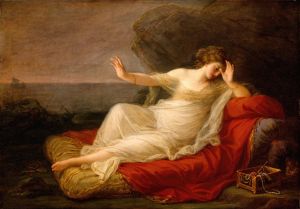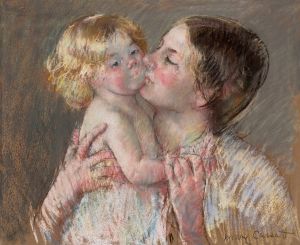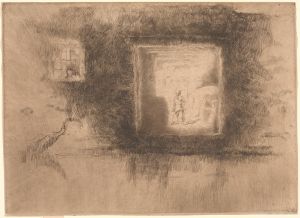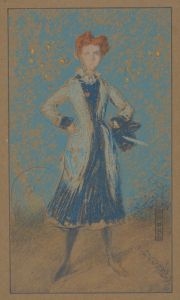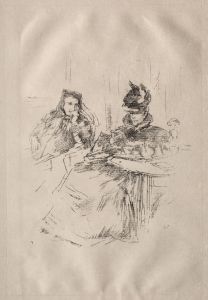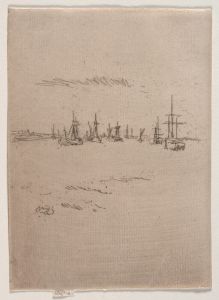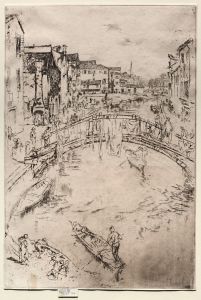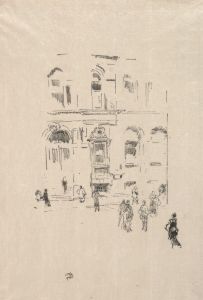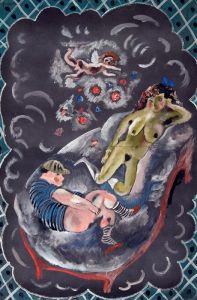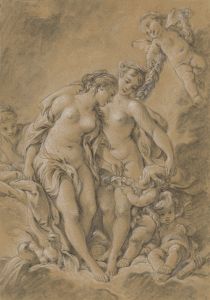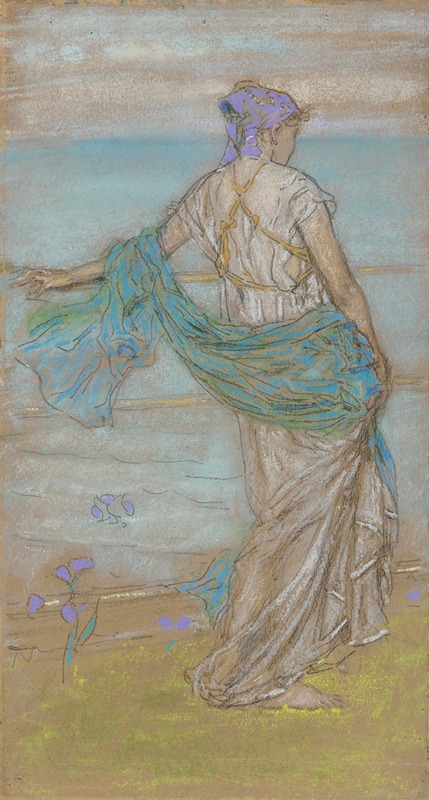
Annabel Lee
A hand-painted replica of James Abbott McNeill Whistler’s masterpiece Annabel Lee, meticulously crafted by professional artists to capture the true essence of the original. Each piece is created with museum-quality canvas and rare mineral pigments, carefully painted by experienced artists with delicate brushstrokes and rich, layered colors to perfectly recreate the texture of the original artwork. Unlike machine-printed reproductions, this hand-painted version brings the painting to life, infused with the artist’s emotions and skill in every stroke. Whether for personal collection or home decoration, it instantly elevates the artistic atmosphere of any space.
James Abbott McNeill Whistler, an American artist active during the late 19th century, is renowned for his contributions to the Aesthetic Movement, which emphasized art for art's sake. One of his notable works is "Annabel Lee," a painting that reflects his distinctive style and artistic philosophy.
"Annabel Lee" was created in 1890 and is named after the famous poem by Edgar Allan Poe. Whistler's choice of title suggests a connection to the themes of love and loss that permeate Poe's work. The painting is an oil on canvas and measures approximately 50.8 x 76.2 cm (20 x 30 inches). It is currently housed in the collection of the Freer Gallery of Art, part of the Smithsonian Institution in Washington, D.C.
Whistler's "Annabel Lee" is characterized by its subtle use of color and delicate brushwork, which are hallmarks of his mature style. The painting features a solitary female figure, dressed in a flowing gown, standing by the seashore. The background is composed of soft, muted tones that evoke a sense of tranquility and melancholy. The figure's contemplative pose and the serene landscape create an atmosphere of introspection and emotional depth.
Whistler's approach to composition in "Annabel Lee" reflects his interest in Japanese art, which he admired for its simplicity and elegance. The influence of Japanese aesthetics is evident in the painting's minimalistic design and the emphasis on harmony and balance. Whistler often incorporated elements of Japanese art into his work, and "Annabel Lee" is a prime example of this synthesis.
The painting also demonstrates Whistler's mastery of tonal harmony, a concept he championed throughout his career. He believed that the arrangement of colors and tones should create a cohesive and pleasing visual experience, much like a musical composition. In "Annabel Lee," the harmonious blending of colors and the careful modulation of light and shadow contribute to the overall sense of unity and coherence.
Whistler's "Annabel Lee" is not only a testament to his technical skill but also to his ability to convey emotion through subtle visual cues. The painting's subdued palette and gentle brushstrokes evoke a sense of quiet contemplation, inviting viewers to engage with the work on a deeper emotional level. This ability to elicit an emotional response through art was a key aspect of Whistler's philosophy and is evident in many of his other works.
In summary, "Annabel Lee" by James Abbott McNeill Whistler is a significant example of the artist's mature style and his commitment to the principles of the Aesthetic Movement. The painting's delicate composition, tonal harmony, and emotional depth reflect Whistler's unique artistic vision and his ability to create works that resonate with viewers on both an intellectual and emotional level.





